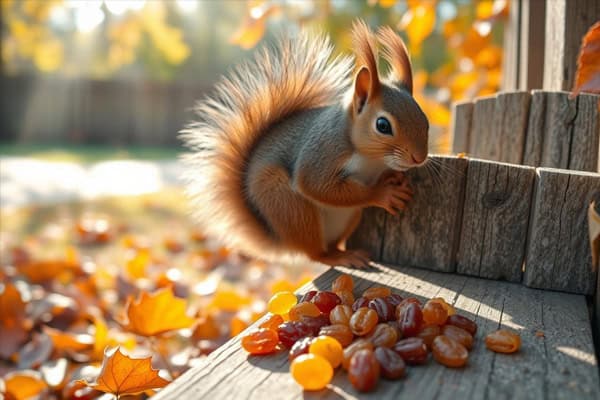How Long Do Wood Pigeons Live?
Ever thought about why some wood pigeons live longer than others? Learning about the wood pigeon’s lifespan is not just interesting. It also shows us the key factors that help them live longer. In the wild, wood pigeons usually live about six years. But, many things can change how long they live.
We will look into their lives in the wild and in captivity. We’ll see how different places affect their lifespan.
Introduction to Wood Pigeons
Wood pigeons, known as Columba palumbus, are loved and well-known in the UK. They stand out with their gray feathers and white neck patches. You can find them in fields, woods, parks, and even cities.
These birds often live in big groups, making them more charming. They can live in both rural and city areas. They get along well with other animals, showing their friendly nature.

Columba palumbus are versatile in their ways. They eat seeds, berries, and crops, helping the environment. Their actions help keep the ecosystem balanced, making nature more interesting.
Learning about wood pigeons helps us appreciate these birds more. They show us the beauty of life around us. They play important roles in our world, making it richer.
Understanding the Lifespan of Wood Pigeons
Exploring the wood pigeon lifespan shows us how many factors affect their survival. These factors shape how long they live in the wild. Many young wood pigeons don’t make it past their first year due to predators and harsh environments.
Despite this, some wood pigeons can live up to six years. In ideal conditions, some have even reached over 17 years. This shows how important things like a safe home, avoiding predators, and successful breeding are.
Knowing about their life stages helps us understand how resilient wood pigeons are. Each stage affects how long they can survive in the wild.
How Long Do Wood Pigeons Live
Learning about the lifespan of wood pigeons is fascinating. We often talk about their average lifespan, but the range can surprise us.
Average Lifespan in the Wild
Wood pigeons in the wild usually live about six years. Many young ones face big challenges in their first year, leading to a lot of deaths. Their survival depends a lot on their environment and predators.
Maximum Recorded Lifespan
While we know the average lifespan, some wood pigeons live much longer. Some have lived over 17 years and nine months. Some might even live over 20 years. This is thanks to good genes and a good environment.
| Characteristic | Details |
|---|---|
| Average Lifespan | Approximately 6 years in the wild |
| Longest Recorded Lifespan | Over 17 years and 9 months |
| Possible Lifespan Exceeding | 20 years under optimal conditions |
| Factors Influencing Lifespan | Genetics and environmental care |
Factors Affecting Wood Pigeon Longevity
Wood pigeons’ lifespan is affected by many factors. These include threats from wildlife and the environment. Each factor plays a big role in how long these birds can live.
Predators and Threats
Wood pigeons have many threats that affect their survival. Birds like goshawks are big predators that hunt them. Foxes and badgers also pose a threat on the ground. These threats show how hard it is for pigeons to survive, which affects their lifespan.
Environmental Influences
The environment is key to wood pigeons’ lives. They need food and shelter, especially when the weather is tough. But, things like cities growing and destroying their homes make things harder. Knowing about these challenges helps us understand why some pigeon populations do better than others.
Wood Pigeons in Captivity
Wood pigeons in captivity often live longer than those in the wild. With the right care, they can live over 15 years. The way we keep them affects how long they live.
Life Expectancy of Captive Wood Pigeons
Captive wood pigeons thrive in safe, stable homes with humans. They don’t face predators and always have food, which helps them live longer. Knowing how long they can live shows the joys of caring for these birds.
Care and Management for Longevity
Good management is key to a long life for captive wood pigeons. Here are important tips for their care:
- Balanced diet: Feed them a varied, nutritious diet.
- Health monitoring: Take them to the vet regularly to catch health problems early.
- Enrichment: Give them a fun environment to reduce stress and keep them active.
- Clean Habitat: Keep their home clean for their health and happiness.
Following these tips helps our captive wood pigeons live happy, long lives. Taking good care of them not only makes them healthier but also makes our time with them more rewarding.
| Factors Influencing Lifespan | Impact on Lifespan |
|---|---|
| Balanced Diet | Promotes overall health and longevity |
| Regular Veterinary Care | Early detection of health issues |
| Enrichment Activities | Reduces stress and encourages natural behaviors |
| Clean Living Environment | Prevents disease and enhances quality of life |
The Role of Diet in Wood Pigeon Lifespan
Diet is key to the health and lifespan of wood pigeons. Knowing what they eat shows us how food affects their health. They eat grains, seeds, and young shoots, helping them live well in different places.
Wood pigeons change their eating habits with the seasons. They use what food is available. This helps them get the nutrients they need for health and breeding.
Good nutrition is crucial for wood pigeons to live long. Eating a balanced diet full of vitamins and minerals keeps them healthy. By looking at what they prefer to eat, we see how good food helps them live longer. This is good for both wild and kept pigeons.
| Food Type | Nutritional Value | Impact on Health |
|---|---|---|
| Grains (wheat, barley) | High in carbohydrates | Provides energy for daily activities |
| Seeds (sunflower, millet) | Rich in fats and proteins | Supports muscle growth and reproductive health |
| Young shoots (leafy greens) | High in vitamins A and C | Boosts immune system and aids digestion |
| Fruits (berries, apples) | Natural sugars and antioxidants | Enhances overall health and well-being |
In conclusion, diet is very important for wood pigeon longevity. Giving them the right nutrients through a varied diet helps their health. This leads to longer, healthier lives.
Nesting Habits and Their Impact on Survival
The nesting habits of wood pigeons are key to their survival. They build their nests with twigs, usually in trees or thick shrubs. These nests are simple, which helps them get ready fast for the breeding season.
Wood pigeons can breed all year, but they do most of their breeding in warmer months. A female lays two eggs at a time, which helps their numbers grow. The more young ones a pair raises, the more likely their chicks will make it to adulthood.
The breeding of wood pigeons is affected by the weather and predators. Where they place their nests is very important. Choosing safe spots helps protect eggs and young birds from harm.
Here’s a quick look at how wood pigeon nesting affects their survival:
| Nesting Aspect | Details |
|---|---|
| Typical Nest Material | Twigs and branches |
| Common Nest Location | Trees and shrubs |
| Average Clutch Size | Two eggs |
| Breeding Season | Year-round, peaks in warmer months |
| Influencing Factors | Predators, weather, location |
Recommended Articles to Read
| Top 13 Birds Of Mexico (With Stunning Photos) |
| Large Flightless Birds In The World |
| Blue Jay Sign From Heaven |
| What is the Difference Between Ducks vs Swans |
Conclusion
The wood pigeon’s lifespan is influenced by many things, like predators, the environment, and what they eat. In the wild, they usually live about six years. But, they can live longer if they are taken care of in captivity.
Knowing what affects the wood pigeon’s lifespan is key to helping them. By taking care of their homes and supporting conservation, we can help them live better. This way, wood pigeons can keep thriving and make our natural world richer.
Working together to protect these amazing birds shows how our actions now affect their future. By understanding their needs, we help with conservation and keep our world diverse.






